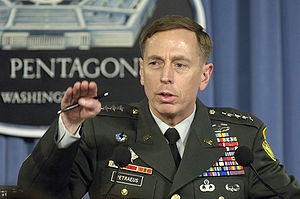Washington Post:
...
The first to die was their leader, Mullah Ismail, hunted down and killled by U.S. Special Operations troops. Next came the heir apparent, Mullah Jamaluddin, even before he could take over as Taliban "shadow" governor. Within a week, several other top commanders were dead, a new governor had been captured and the most powerful among the remaining insurgents had lit out for the Turkmenistan border - all casualties of the secretive, midnight work of American commandos.
And yet what has happened here in Badghis province also shows how large a gap remains between killing commanders and dismantling an insurgency. Nearly half of the province remains under insurgent control, an Afghan intelligence official estimated. A new Taliban governor has already been dispatched to the province, Afghan officials say, even though NATO portrayed Mullah Ismail's killing as a "huge blow" that would "significantly reduce Taliban influence throughout the region."
...
The barrage launched against the Taliban by Special Operations forces here in recent weeks is part of a broader American effort that is clearly succeeding. As other U.S. goals in Afghanistan have faltered - reforming the government, winning hearts and minds - Gen. David H. Petraeus and his new troops have so far succeeded at killing their enemies. American officials have held up the example of the onslaught against the Taliban leadership as a clear sign of progress, a development sure to factor into President Obama's December review of the Afghan campaign.
"We're trying basically to squeeze the life out of the enemy,'' Petraeus said in an interview Friday.
The increased military pressure in recent months has undoubtedly made life more difficult for Taliban leaders. Petraeus said the number of U.S. Special Operations troops doing targeted raids has continued to increase in recent months, even after a buildup under his predecessor, Gen. Stanley A. McChrystal.
Among those insurgents killed in the past month are al-Qaeda's No. 3 commander in Afghanistan and 15 shadow governors. Petraeus said mid-level commanders - "the senior leaders aren't in the country, they lead by cellphone" - have expressed frustration at being sacrificed while their bosses live safely across the border.
"This is quite relentless pressure. It forces them on the run," Petraeus said. "But again, if you don't take away the safe haven, it doesn't have a lasting effect."
The aggressive killing campaign has unfolded despite recent discussions between insurgents and the Afghan government, which NATO has helped facilitate by providing safe passage to Kabul for some senior Taliban figures. These early steps toward negotiations do not seem to have slowed the U.S. military's targeting of the Taliban, as both sides vie for the upper hand in the event that real negotiations commence.
...
Killing the Taliban leadership gives the remaining leaders some incentive to strike a deal. It also makes it harder for the Taliban to exercise command and control when
US forces move into an area with counterinsurgency operations. It appears to already being having an effect on enemy morale and willingness to take leadership positions.
 Image via Wikipedia
Image via Wikipedia
Comments
Post a Comment